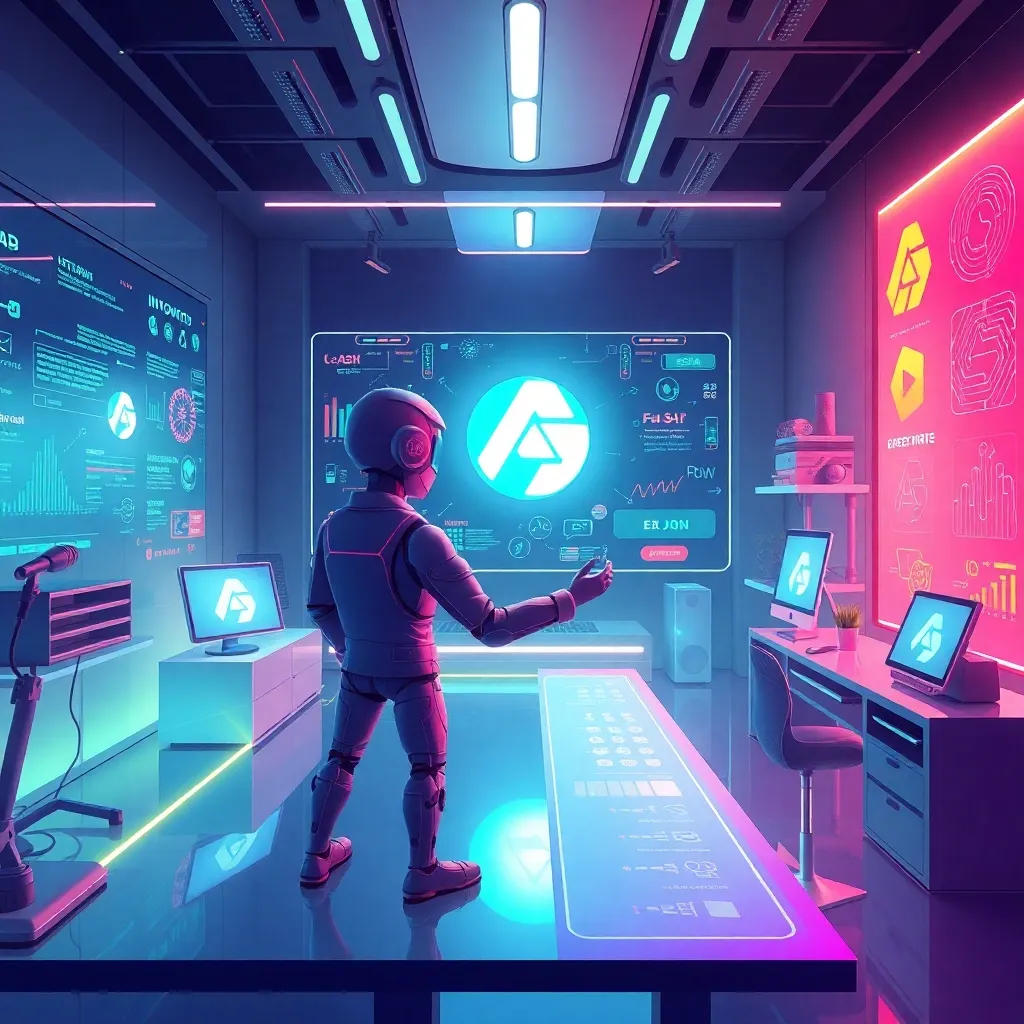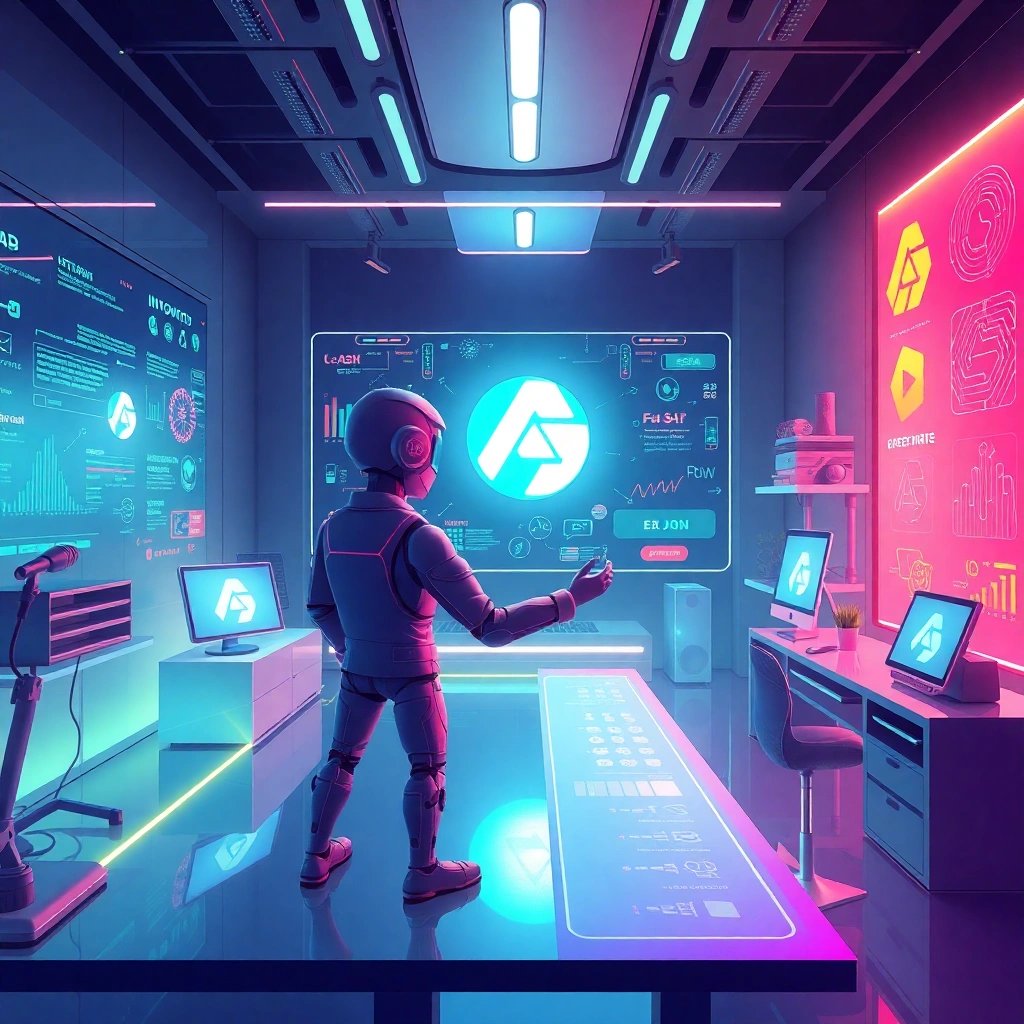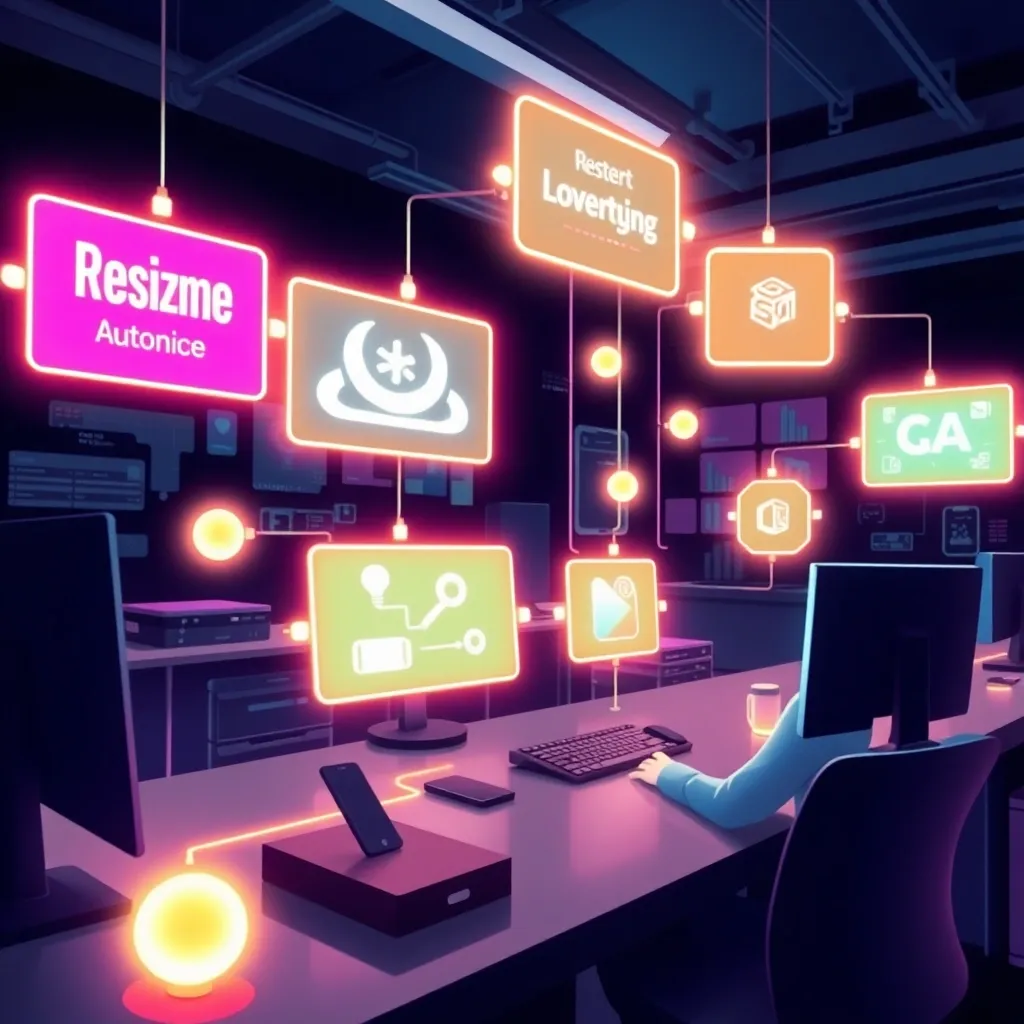Building Brand Kits: The Role of AI in Consistent Branding
- Building Brand Kits: The Role of AI in Consistent Branding
- Why Brand Kits Matter More Than Ever
- From Guidelines to Systems: What AI Adds to Brand Kits
- AI Brand Kit Creation: A Practical Framework
- Consistent Branding Strategies: Principles That Scale
- Enhancing Brand Kits with AI: From Static to Smart
- AI-driven Branding Tools: The Landscape and What to Look For
- Spotlight: Mad Bot Art as a Unified AI Production Studio
- Maintaining Brand Identity Across Every Medium
- Branding Automation Solutions: Workflows That Save Time
- Using AI to Standardize SEO and Content Ops
- Collaboration and Governance: Making Consistency a Team Sport
- Measuring Brand Consistency and Impact
- A 30-60-90 Day Plan for Integrating AI In Branding
- Common Pitfalls and How to Avoid Them
- Use Case Vignette: Global Product Launch
- How to Operationalize Brand Kits in Mad Bot Art
- Procurement Checklist: Choosing Your AI Studio
- Frequently Asked Questions
- Conclusion: From Consistency to Competitive Advantage

Building Brand Kits: The Role of AI in Consistent Branding
Strong brands are built on repetition with intention. Fonts, colors, motion, voice, and message patterns appear again and again—recognizable at a glance, trustworthy at scale. But keeping that consistency as your company grows across channels, geographies, and formats is hard. Brand kits help, yet they’re only as effective as the teams and tools maintaining them. This is where AI shifts the curve—from static guidelines to living systems that create, govern, and measure brand integrity. In this guide, we’ll explore how AI elevates brand kits from PDFs to performance engines, drawing on unified campaign frameworks like AI-generated campaigns from concept to execution, and how to put AI to work for Consistent Branding Strategies without losing your creative edge.
Along the way, we’ll show practical ways to leverage AI Brand Kit Creation, AI-driven Branding Tools, and Branding Automation Solutions to manage, enhance, and scale your identity across copy, images, video, voice, and SEO content. We’ll also highlight how the Mad Bot Art platform serves as a unified AI production studio that bridges strategy to delivery in one browser-based workspace.
Why Brand Kits Matter More Than Ever
Brand kits codify the essentials—logo sets, color palettes, typography, iconography, imagery styles, tone of voice, motion systems, and usage rules. Historically, they’ve lived in static decks. But modern brands are multimodal and dynamic. Teams create ads, product pages, sales decks, social videos, onboarding tutorials, localized landing pages, and more—often with distributed contributors, partner agencies, and varied tool stacks.
The consequence: drift. Subtle deviations compound over time—slightly off hues, half-fitted headlines, inconsistent lower-thirds. The costs range from decreased ad performance to compliance risks and brand confusion. AI helps brand kits become operational systems that:
- Generate assets in your house style by default
- Enforce guardrails without slowing creative velocity
- Localize consistently across markets
- Measure and tune consistency over time
- Support collaboration, approvals, and audit trails
This is the promise of AI For Brand Consistency: not replacing creativity, but scaling it responsibly.
From Guidelines to Systems: What AI Adds to Brand Kits
A modern, AI-enabled brand kit is more than a set of PDFs. It’s a connected layer that combines rules, templates, data, and automation to maintain identity across every medium.
Core AI capabilities for Brand Management With AI
- Brand voice modeling: Train AI on approved messaging, FAQ documents, and campaign winners to guide copy generation and ensure distinctive tone across regions and channels.
- Visual style transfer: Apply your look across photography, illustration, and generated imagery—consistent lighting, textures, compositions, and color treatments.
- Motion and video consistency: Define transition types, lower-third styles, intro/outro stings, and animation pacing, then bake them into scene templates.
- Voice and audio identity: Map brand voice timbres and SFX libraries to narrations and stingers for sonic consistency.
- Template-driven generation: Turn your best-performing layouts into lockable templates with editable fields, so assets vary without breaking structure.
- Automated QA and governance: Validate hex codes, font stacks, logo usage, safe areas, aspect ratios, and even tone markers before approvals.
- Content tagging and analytics: Track adherence, measure performance, and link consistency to outcomes.
By Integrating AI In Branding, you convert guidelines into an active platform that keeps teams on-brand and in sync.
AI Brand Kit Creation: A Practical Framework
Here’s a tactical blueprint to turn your guidelines into a functioning, AI-powered brand kit. Consider it your playbook for Building Effective Brand Kits.
-
Inventory and audit
- Gather logos, type scales, palettes, patterns, iconography, photo examples, brand voice docs, and motion rules.
- Collect “gold standard” assets with proven performance (hero ads, landing pages, product demos).
- Document areas of inconsistency and recurring exceptions (e.g., regional constraints).
-
Model your brand voice
- Curate high-quality copy to train tone prompts (preferred verbs, sentence length, rhythms, value propositions).
- Create prompt blocks for different contexts: product pages, ads, social, support, investor relations.
- Establish negative prompts—words and claims to avoid.
-
Encode visual rules
- Specify exact hex values, contrast minima, complementary ranges, and gradient systems.
- Lock type hierarchies with scaling rules (H1–H6, body, captions).
- Define allowed composition grids, image cropping, and logo clear space.
- Train or select style presets for photography and illustration (lighting, lens, color curves).
-
Build template libraries
- Convert best-performing layouts into flexible templates for ads, thumbnails, stories, landing pages, decks.
- Embed constraints: content zones, character counts, safe margins, and automated resize behaviors.
-
Motion, video, and voice consistency
- Set motion language (easings, durations, transitions, masking styles).
- Standardize lower-thirds, callouts, supers, and end cards.
- Model voice options (accent, pitch, pacing) and define usage contexts.
- Establish a library of reusable scenes and bumpers.
-
Governance workflows
- Create approval paths, role-based permissions, versioning, and rollback policies.
- Implement QA checks for color contrast, logo usage, and headline length per platform.
- Log audit trails for enterprise compliance.
-
Measurement loop
- Define “brand consistency score” across text, visual, motion, and voice dimensions.
- Correlate consistency with funnel metrics (CTR, conversion, retention).
- Run controlled tests to learn when deviations improve outcomes—and encode exceptions as rules.
This is AI Brand Kit Creation in action—converting brand rules into operational logic, templates, and automated checks that enhance and protect identity at scale.
Consistent Branding Strategies: Principles That Scale
Whether you’re a global enterprise or a scaling startup, these Consistent Branding Strategies help ensure your kit becomes a growth multiplier:
- Constrain the right variables: Lock identity-critical elements (logos, type scales, palette) while allowing content-specific variation (imagery, copy entry points).
- Set channel-specific rules: TikTok typography requirements differ from display ads; design with the channel’s language in mind.
- Design for localization: Create template fields that expand for languages with longer strings and support right-to-left layouts.
- Bake in accessibility: Ensure color contrast, motion sensitization, subtitles, and readable type. Accessibility consistency is brand consistency.
- Make exceptions explicit: Create “escape hatches” with documented rationale and pre-approved alternates (e.g., low-bandwidth variants).
- Iterate from performance: Track which consistent patterns correlate with better outcomes and feed those learnings back into your templates.
AI For Brand Consistency excels when rules are explicit and measurable. The more you clarify your brand’s logic, the smarter your system becomes.
Enhancing Brand Kits with AI: From Static to Smart
Enhancing Brand Kits is about upgrading your kit with data, generation, and governance:
- Dynamic palettes: Use AI to recommend palette variants that meet contrast requirements when placed on new photography or gradient backgrounds.
- Content-aware layouts: Let templates reflow based on copy length and auto-adjust spacing, preserving typographic rhythm.
- Performance-informed defaults: Seed template defaults from your highest-converting creative and let AI propose alternatives based on campaign goals.
- Consistency diagnostics: Automated reports flag off-brand colors, misused logos, or non-compliant tone markers.
These capabilities turn brand kits into living systems that enable better creative decisions faster.
AI-driven Branding Tools: The Landscape and What to Look For
The AI tooling market is crowded. Use these criteria to evaluate AI-driven Branding Tools for Building Effective Brand Kits:
- Multimodal depth: Look for tools that handle text, image, video, audio, and SEO. Single-medium tools multiply handoffs and risk.
- Governance first: Seek version control, role-based permissions, approvals, and audit logs.
- Template rigor: Editors should support locked layers, parametric fields, and automated exports to multiple aspect ratios and formats.
- Model orchestration: The ability to swap models and tune prompts without rebuilding pipelines.
- Collaboration and real-time editing: Reduce friction across marketing, creative, and legal stakeholders.
- Analytics linkage: Connect consistency metrics to campaign performance and spend.
- Monetization and billing: For agencies and distributed teams, usage-based billing and profitability analytics matter.
Spotlight: Mad Bot Art as a Unified AI Production Studio
Mad Bot Art is built for teams that want one place to plan, produce, and profit from every campaign asset—without bouncing between tools. It’s a browser-based workspace that combines creation, collaboration, governance, analytics, and billing in one stack.
What sets it apart:
- Strategy-to-delivery pipeline: Start with briefs and competitive analysis, evolve into multimodal outputs—text, images, videos, voiceovers, avatars, and SEO articles—within the same project.
- Curated model presets: Generate on-brand copy, visuals, video, audio, and avatars using tuned prompts and style guards.
- Scene editors and timelines: Orchestrate campaigns with project hierarchies, scene templates, and real-time collaboration.
- Brand kits at the core: Encode palettes, typography, logos, motion language, and voice models—then apply them automatically to assets.
- Operational rigor: Autosave-by-default editors, versioned projects, approvals, and governance baked in to reduce production risk.
- SEO workspace: Competitor analysis, article drafting, and refinement live next to creative production to keep messaging and search aligned.
- Monetization ready: Credit wallets, Stripe billing, and profitability dashboards help agencies and enterprise teams track spend and ROI.
- Extensibility: A connector registry and modular services let teams adopt new models and features rapidly.
If your goal is Consistent Branding Strategies that actually ship, Mad Bot Art’s “one AI studio” approach is designed for enterprise-grade polish and control. Explore the platform at Mad Bot Art to see how Brand Management With AI looks when creation and governance happen together.
Maintaining Brand Identity Across Every Medium
Maintaining Brand Identity is both an art and an operations challenge. Here’s how to keep integrity across formats:
- Copy: Train tone models and require structured prompts for different asset types. Use short, scannable patterns for ads; narrative arcs for videos; scorable headings for SEO.
- Visuals: Lock color tokens and type; restrict generative outputs with style presets; run automated checks for contrast, margins, and logo placement.
- Motion: Define a motion language and speed; reuse transitions and stingers. Consistent motion is as identifiable as color.
- Voice: Standardize voiceover timbres and pacing, with market-specific variants; ensure pronunciation dictionaries for product names and terms.
- SEO content: Maintain a brand editorial POV while aligning to search intent—embed expertise, claims, and links that reflect your value prop.
AI For Brand Consistency ties these together with rules and automation so every new asset starts on-brand and stays on-brand through review.
Branding Automation Solutions: Workflows That Save Time
Automation is the difference between policy and practice. Consider these Branding Automation Solutions:
- Intake-to-template: Automatically route briefed content into pre-selected templates based on channel and goal.
- Auto-resize and format: Generate platform-specific variants (e.g., 1:1, 9:16, 16:9) with locked brand elements retained.
- Copy variants: Produce A/B voice tones within approved guardrails to test headlines and CTAs safely.
- QA gates: Block approvals if color, logo, or copy guardrails fail. Offer one-click fixes.
- Localization flow: Machine-translate first, then run human edit; auto-expand templates for longer text; re-run QA checks in the target language.
- Export pipeline: Output MP4, PDF, ZIP, and platform-ready specs with consistent naming and metadata.
Platforms like Mad Bot Art operationalize these flows so they’re practical, not aspirational. Learn more at Mad Bot Art
Using AI to Standardize SEO and Content Ops
SEO is a brand touchpoint—your voice and credibility live in search. Here’s how to align SEO with AI Brand Kit Creation:
- Brand voice in SERP copy: Train models to write titles and meta descriptions in your tone while hitting keyword targets.
- Structured outlines: Use AI to generate outlines that reflect brand logic—value propositions, proof points, and differentiation—before drafting.
- Fact and claim governance: Embed claim libraries with citations; block unverified assertions.
- Internal linking rules: Automate link placements to high-value pages, with anchor text aligned to brand messaging.
- Competitor-aware positioning: Analyze top SERPs and differentiate content with brand POV, product advantages, and unique angles.
- Consistency scoring: Score drafts against brand voice patterns and visual guidelines for any embeds or diagrams.
Mad Bot Art’s SEO workspace keeps research, draft creation, and refinement tied to the same governance system as your creative production—helping with Maintaining Brand Identity across growth and search initiatives.
Collaboration and Governance: Making Consistency a Team Sport
Even the best AI-driven Branding Tools fail without organizational alignment. Build these practices:
- Clear roles: Brand guardians set rules; creative producers build; reviewers approve with structured checklists.
- Version control: Keep history and rationale for decisions so learning compounds.
- Comment-to-change workflows: Turn feedback into atomic updates that propagate across templates and scenes.
- Training and onboarding: Provide tool walkthroughs and “brand pitfall” guides for new contributors.
- Incident response: If off-brand assets slip through, log and analyze root causes—then update rules or templates.
Brand Management With AI succeeds when teams trust the system and know how to work with it.
Measuring Brand Consistency and Impact
To prove and improve your system, measure both adherence and outcomes:
- Consistency metrics
- Color compliance rate
- Typographic hierarchy adherence
- Logo usage accuracy
- Tone of voice match scores
- Motion/transition conformity
- Operational metrics
- Asset time-to-approve
- Revision count per asset
- Localization turnaround times
- Cost per asset vs. baseline
- Business outcomes
- CTR, CVR, CAC, ROAS by template
- Organic rankings and CTR for branded terms
- Retention or activation tied to education assets
Tie improvements back to Enhancing Brand Kits so increases in consistency translate to performance gains.
A 30-60-90 Day Plan for Integrating AI In Branding
Here’s a pragmatic rollout for Integrating AI In Branding without disrupting campaigns:
- Days 1–30: Foundations
- Audit existing brand assets; select gold standards.
- Encode palette, type, and logo rules; build initial templates.
- Train brand voice prompts; set up basic QA checks.
- Days 31–60: Expansion
- Add motion, video, and voice models.
- Establish approval workflows and role permissions.
- Pilot with one campaign across two channels; measure time-to-approve and adherence.
- Days 61–90: Scale
- Add localization flow and SEO workspace integration.
- Introduce analytics dashboards tying consistency to performance.
- Extend to partner agencies with usage-based billing.
Using a unified studio like Mad Bot Art accelerates this plan because creation, governance, analytics, and billing are already connected.
Common Pitfalls and How to Avoid Them
- Overlocking creativity: If templates are too rigid, teams will route around them. Preserve creative “play zones.”
- Ignoring edge cases: Document exceptions (e.g., event merch, co-branded assets) and encode them as alternate templates.
- Disconnected tools: Fragmented systems invite drift. Consolidate workflows to reduce handoffs and errors.
- Lack of feedback loops: Consistency should serve performance; keep testing and refining.
- Insufficient training data: Poor voice or style models produce generic outputs. Feed high-quality examples and keep updating.
Use Case Vignette: Global Product Launch
A global SaaS company plans a three-month launch with ads, demos, webinars, and landing pages in six languages.
- Setup
- Brand kit encoded: type, palette, logo rules, motion systems, voice models.
- Templates built for ads, thumbnails, landing pages, and demo scenes.
- Localization automation activated with human-in-the-loop edits.
- Execution
- Creative leads brief the AI; copy variants generated in brand tone.
- Scene editor assembles product demos; voiceovers match approved timbre.
- QA catches color contrast issues in two locales; automated fixes applied.
- SEO articles drafted from competitor analysis and refined in brand POV.
- Outcomes
- 46% faster asset approvals; 32% fewer revisions.
- 19% lift in CTR on on-brand ad variants; consistent conversion rates across locales.
- Clear cost attribution via credit wallets and profitability dashboards.
This illustrates how Branding Automation Solutions and AI For Brand Consistency convert a high-complexity launch into a repeatable, governable operation.
How to Operationalize Brand Kits in Mad Bot Art
To see how all the concepts land in practice, here’s a quick path inside Mad Bot Art:
-
Create a brand workspace
- Upload logos, define palettes and type systems, and set motion presets.
- Train brand voice with your top-performing copy and guidelines.
-
Build template libraries
- Convert your best ads, landing pages, social stories, and deck slides into lockable templates with editable content fields.
-
Set governance rules
- Define approvers, QA checks (color, type, logo), and required metadata fields.
- Establish naming conventions and export presets (MP4, PDF, ZIP).
-
Produce assets
- Use scene editors and timelines for videos; apply lower-thirds and end cards automatically.
- Generate copy variants in your tone; attach voiceovers from approved timbres.
-
Localize and scale
- Trigger translation workflows; adjust for text expansion; re-run QA in each language.
- Batch export per channel with consistent naming and tagging.
-
Measure and monetize
- Track adherence, approvals, spend, and ROI. If you’re an agency, bill clients transparently via credits and Stripe.
By centralizing creation and governance, Mad Bot Art helps teams practice Consistent Branding Strategies at speed. Discover more at Mad Bot Art
Procurement Checklist: Choosing Your AI Studio
When evaluating platforms for AI Brand Kit Creation and Brand Management With AI, ensure the following:
- Brand kit primitives
- Palette and type lock-in
- Logo and safe area enforcement
- Motion presets and voice models
- Template parametrics and auto-resize
- Generation quality
- Model presets tuned for marketing-grade outputs
- Support for avatars, voice cloning (with consent), and style transfer
- Scene editors for video and motion
- Governance and collaboration
- Autosave, version control, approvals, and real-time co-editing
- Role-based permissions and audit logs
- SEO integration
- Competitive analysis, drafting, and refinement in-brand
- Fact checking and internal linking rules
- Analytics and billing
- Adherence scoring, performance linkage, usage tracking
- Credit-based billing, multi-account management, profitability dashboards
- Extensibility
- Connector registry for new models and data sources
- Modular architecture to add features rapidly
A platform that checks these boxes will support both Enhancing Brand Kits and Maintaining Brand Identity while keeping creative work joyful.
Frequently Asked Questions
-
How do we prevent generic outputs?
- Feed high-quality brand exemplars; set negative prompts; review early outputs; iterate templates; and keep your model presets updated.
-
Can AI manage co-branded assets?
- Yes—define secondary palettes, logo lockups, and combined voice guidance. Use separate templates to enforce partnership rules.
-
How does AI support compliance?
- Lock claims lists with required citations; enforce approval gates; maintain audit trails; and auto-check color, contrast, and legibility standards.
-
What’s the ROI?
- Typically seen in faster approvals, higher reuse of templates, reduced revisions, and stronger performance consistency across markets.
Conclusion: From Consistency to Competitive Advantage
In crowded markets, consistent branding isn’t a nice-to-have—it’s a growth strategy. AI makes brand kits living systems: they generate, govern, and measure identity in real time across media. By committing to AI Brand Kit Creation, applying Consistent Branding Strategies, and adopting Integrating AI In Branding tools, you can protect your brand while accelerating creative output.
Whether you’re an in-house team or an agency, the goal is the same: ship more on-brand work with less friction and clearer ROI. Platforms like Mad Bot Art bring creation, governance, SEO, and monetization into one place so Brand Management With AI is practical, not theoretical.
If you’re ready to operationalize your identity—from ads to SEO to video—explore how a unified studio can help you build, enforce, and evolve your kit with confidence. Start your journey at Mad Bot Art and bring your brand voice to any medium in minutes—governed, collaborative, and billable.



